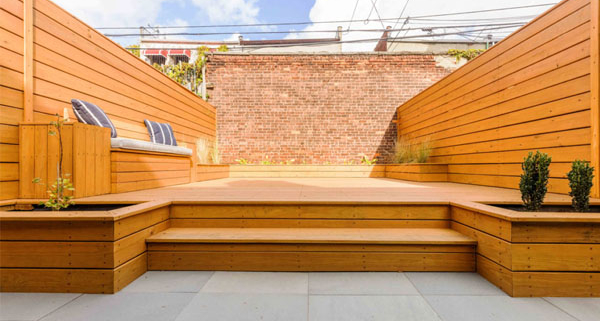Why Green Commercial Contracting Is the Future of Business
In today’s world, Green Commercial Contracting isn’t just a buzzword—it’s the next business standard. From healthier workspaces to stronger bottom lines, there are multiple compelling reasons that sustainable commercial construction is gaining traction. Whether you’re an architect, project manager, or interior contractor, now is the time to embrace green approaches or risk being left behind. Let’s explore why.
The Environmental Urgency
The commercial building sector is a major energy consumer and a leading source of emissions. According to the U.S. Energy Information Administration’s 2018 Commercial Buildings Energy Consumption Survey (CBECS), America’s 5.9 million commercial buildings used 6.8 quadrillion BTUs of energy and spent $141 billion on energy alone.
The Department of Energy further reports that buildings account for 75% of U.S. electricity use and 40% of total energy consumption. With this scale, even modest improvements in energy efficiency can translate into massive environmental benefits and major cost savings.
At the same time, global building emissions are projected to increase rapidly unless sustainable construction practices are widely adopted. Designing and building smarter—whether through efficient HVAC systems, solar orientation, or eco-friendly materials helps businesses take responsibility for their carbon footprint.
Financial Upside for Businesses
From a financial perspective, green building approaches are a win-win. ENERGY STAR–certified commercial buildings use, on average, 35% less energy than their peers, translating to significantly lower utility costs.
In fiscal terms, the EPA’s program helped commercial clients avoid $14 billion in energy costs last year alone, while reducing 170 million metric tons of greenhouse gas emissions.
Long-term benefits also include increased property valuation and higher occupancy rates. LEED-certified office buildings, for example, tend to command premium rents and lower turnover rates. All of this makes sustainable commercial construction not only responsible but profitable.
Healthier & More Productive Workspaces
Green commercial contracting is about people, too. Sustainable design optimizes indoor air quality, lighting, acoustics, and thermal comfort, all of which contribute to occupant health and productivity. The GSA’s sustainable design guidelines emphasize features that improve occupant comfort and environmental performance simultaneously.
Studies consistently show that workers in green, daylight-filled environments report better focus, fewer sick days, and higher overall satisfaction. When you engage an interior contractor who understands these principles, you’re creating not just a space, but a positive experience for employees, clients, and visitors alike.
Strong Regulatory Momentum
Public policies are shifting fast. The GSA now mandates federal projects to exceed ASHRAE 90.1 standards by at least 30% under the Energy Policy Act. Many jurisdictions include green building incentives, from expedited permitting to tax rebates, for projects that comply with standards such as LEED, BREEAM, or ENERGY STAR.
As building codes tighten, green commercial construction becomes less of a luxury and more of a mandate. Staying ahead of this trend positions your projects—and your business—for success.
Emerging Tech & Innovation
The green future is high-tech. Smart thermostats, advanced analytics, daylighting controls, and energy modeling are revolutionizing how buildings perform. NREL reports that small commercial buildings alone account for 44% of U.S. commercial energy use, and SMART systems can slash that number through data-driven operations.
Green commercial contracting now involves integrating technologies that offer real-time efficiency, resilience to climate extremes, and valuable ROI. Whether you’re retrofitting an aging structure or piecing together a new build, these tools are vital.
Talent Recruitment & Retention
Recent shifts show that employees, especially younger workforces, prefer sustainable workplaces. A building that uses green materials, natural light, and comfortable ventilation sends a message: this is a company that invests in its people and its planet. In turn, that brand appeal helps attract and retain top talent, making interior contractors who champion green design highly sought-after.
Recession-Resilient Value
Green contracting isn’t just sustainable—it’s stable. Much like the Empire State Building’s retrofit, which reduced annual energy use by 38% and earned LEED Gold certification, energy-efficient upgrades yield long-term resilience against economic and energy-market volatility.
Lower Lifecycle Costs
Yes, green construction often involves higher upfront costs, but multiple analyses show superior lifecycle returns. A 2010 U.S. Green Building Council report estimates returns of $53–$71 per square foot over 20 years.
The EPA highlights average household cost savings of 13% through performance contracting epa.gov. And federal investments, like the $120 million GSA ESPC awarded in late 2024, underscore that efficiency works.
Your Trusted Partner in Green Commercial Contracting
At Nest, our expertise lies in aligning project goals with sustainable outcomes. Here’s what we bring to the table:
- LEED and ENERGY STAR experience – we guide projects through certification and compliance.
- Data-driven design – leveraging energy modeling, daylighting tools, and HVAC optimization.
- Eco-conscious materials selection – from low-VOC paint to recycled-flooring options.
- Indoor environmental quality focus – natural lighting, air purification, acoustics, and thermal comfort.
- Lifecycle planning – durable installations that minimize long-term maintenance and energy costs.
Our team manages end-to-end green commercial projects, from early planning and design to handover, ensuring clients achieve both sustainable performance and aesthetic excellence.
How to Choose the Right Path
For businesses considering green commercial contracting, start by:
- Performing an energy audit to identify high-impact efficiency opportunities.
- Setting sustainability goals (energy efficiency, LEED certification, WELL, carbon-neutral).
- Select an interior contractor experienced in green materials and systems.
- Prioritizing occupant health and well-being through air quality, lighting, and ergonomics.
- Leveraging incentives—rebates, tax credits, fast-track permitting—for added value.
- Engaging operators early to ensure performance goals are supported long-term.
The Green Business Imperative
Green Commercial Contracting isn’t just a trend—it’s the business model of tomorrow. Sustainable commercial construction addresses environmental risks, reduces costs, enhances health, and elevates brand value. And for interior contractors, it opens doors to transformative design while delivering lasting social and economic returns.
Organizations that embrace green principles now position themselves not just for compliance, but for growth. This is the future of commercial building: efficient, resilient, and people-focused.
Ready to Build Smart, Live Better?
Take the next step toward a sustainable future. Request your free quote now and let Nest lead your green commercial contracting project from vision to reality. By adopting green practices today, you’re not just constructing buildings—you’re building a legacy.





